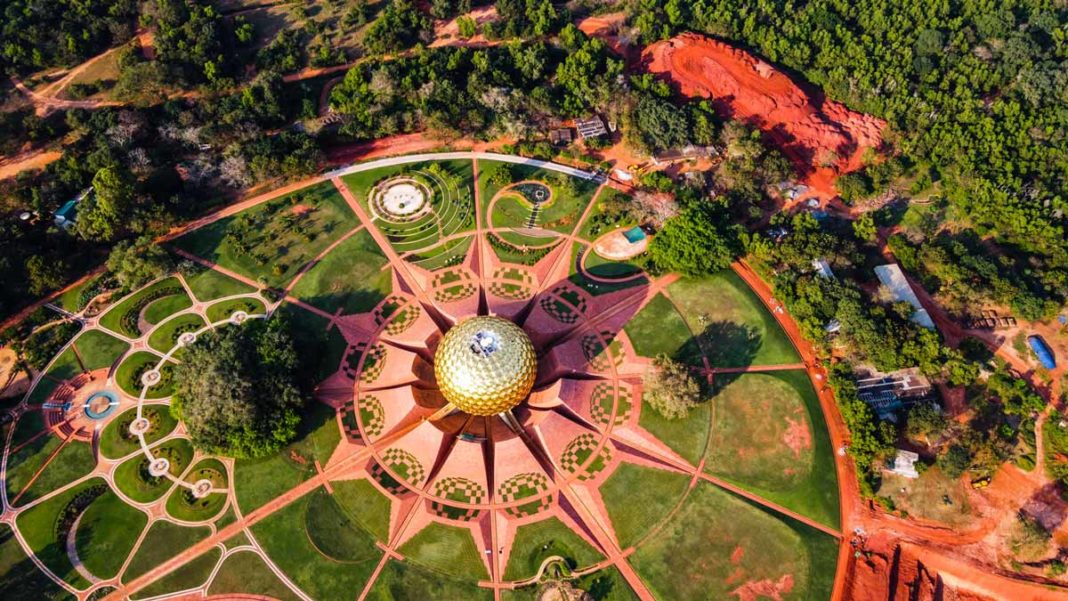This is the second article (S No: OP.4.02) of the series “Stunning Offbeat Places In India”. It’s an endeavor initiated via a series of articles to familiarize you about the abundance of stunning places in India that you might not have heard much about and which you must visit in your lifetime.
Now that we’ve commenced exploring the stunning gems of our country in the last piece, let’s keep up the momentum and explore some more!! Here we go:
11. Kinnaur, Himachal Pradesh
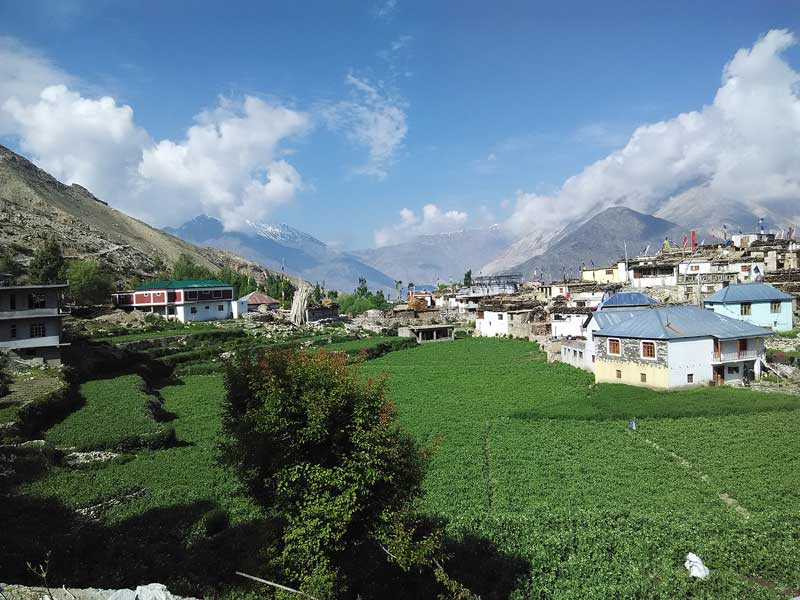
Located around 235 km from Shimla is a piece of paradise called Kinnaur. Surrounded by majestic Himalaya, Zanskar and Dhauladhar mountains, this district encloses the green valleys of meandering Spiti, Baspa, Sutlej and their various tributaries.
A forbidden land once as its doors were opened to tourists only in 1989, the slopes of this land of Fairy tales are covered with thick wooded forest, apple and apricot orchards, vineyards, terraced fields and quaint, little hamlets, each of which has a presiding deity. Hinduism and Buddhism are the two main religions of its people and both coexist in harmony.
Kinnaur is one of the most beautiful places one would ever experience. The two main valleys here are Hangrang Valley and Sangla valley. Tourists can indulge in trekking, rafting, angling, paragliding and other adventure sports. For the religious minded, a parikrama of Kinnaur Kailash is a must while the forts at Kamru, Moorang and Labrang beckon history buffs.
Nature lovers must take time out visit the 31 sq. km Lipa-Asrang Sanctuary that is home to leopards, brown bear, ibex, bharal the blue sheep, musk deer, gorals and yaks.
The best time to visit Kinnaur is between April and October as rest of the time, snow envelopes the place and it survives in an icy cocoon.
12. Jaisalmer, Rajasthan
Sitting on a ridge of yellow sandstone, right in the middle of the Thar Desert, lies the Golden City of Rajasthan, Jaisalmer. The town was founded by the Bhati ruler, Rawal Jaisal in 1156.
Around 25% of the town’s population lives inside the Jaisalmer Fort that stands on the Meru hill. As it was the scene of many battles in the past, it is also known as Trikoot Garh. The Raj Mahal where the erstwhile royal family still resides, Laxminath Temple and the Jain temples are the main attractions inside the fort. Known for their intricate artwork and exquisite architecture of yellow sandstone, the Jain temples like Shantinath, Kuntunath, Rishabhdev, Parshwanath and Chandraprabhuare dedicated to Jain Tithankaras Shantinath and Parshwanath.
The historical and magnificent havelis of Jaisalmer with their beautiful architecture are well known. The Patwa Haveli, a cluster of 5 mansions, is the most important and the biggest of these havelis. The Nathmal Haveli and the Salim Singh Ki Haveli are the other notable ones.
The town is surrounded by vast swathe of the Great Indian Desert where one may go for camel safaris and stay at camps right in the desert. Visit the Bada Bagh to have a dekko of the cenotaphs which were erected for the rulers from the royal family.The Maru Mahotsav Jaisalmer or the Desert Festival is held in the midst of February, 42 km from the town, in the Sam dunes of the Thar. It is a must visit to intimately know the culture of the desert and delve into a rustic life.
September to mid-March is the best time to visit Jaisalmer as searing heat of the desert is missing at this time.
13. Kumbhalgarh, Rajasthan
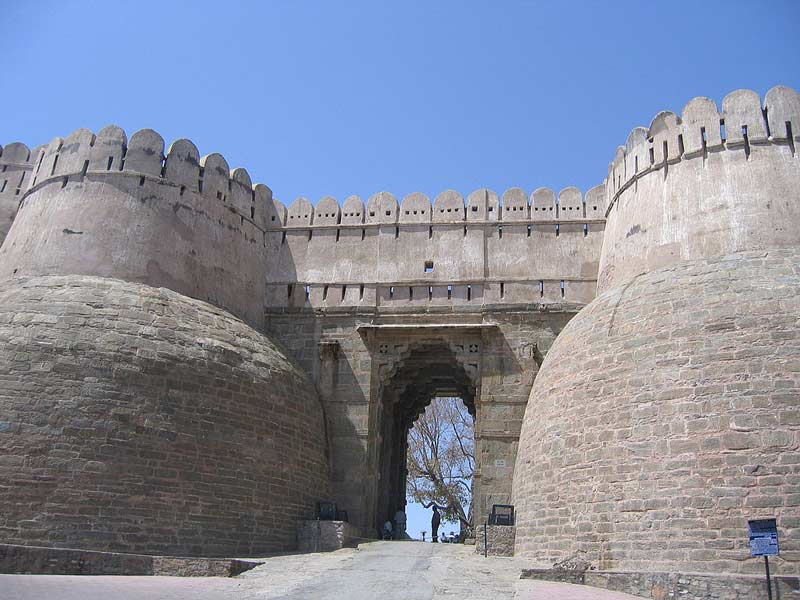
Located 82 km from Udaipur is Kumbhalgarh, a UNESCO World Heritage Site which was built by Rana Kumbhain the 15th century.Maharana Pratap was born in this impregnable fort which stands atop a 1,100 m high hilltop and its walls extend for a distance of 36 km. The alluring Aravalli range can be viewed from the top of the palace while standing on the fort wall, one can look at the Thar sand dunes.
Within these walls are ensconced around 350 temples. Of these, the GaneshaTemple is considered the oldest while the Neelkanth Mahadev Temple, with the black twelve-handed idol of Lord Shiva was built in 1458. The Parshwanath Jain Temple was built in 1513.
The fort is surrounded by Kumbhalgarh Wildlife Sanctuary. One may see a lot of wildlife in the sanctuary as it is home to animals such as leopard, Indian wolf, striped hyena, sloth bear, sambhar, nilgai, chausingha, chinkara, golden jackal; etc. For the bird lovers, the sanctuary has peacocks, doves, bulbul, grey pigeon, parakeet, golden oriole and white breasted kingfisher while for adventure lovers, local tour operators organize trekking horse safaris.
All in all, a truly offbeat experience!!!!
14. Sanchi, Madhya Pradesh
Located at a distance of 46 km from the state capital Bhopal is Sanchi, a UNESCO World Heritage Site, which has the Great Stupa, built by Ashoka the Great on a hilltop in the 3rd BC, as he adopted Buddhism as the state religion. The Stupa has four gates at the cardinal points where the beautiful and elaborate carvings on stone open our eyes to the history of the time and about Buddhism.
Besides the Great Stupa, Sanchi has other stupas as well, located close by. Some of these are at Satdhara, where the relics of two closest confidants of Buddha, Mahamoggallana and Sariputra are enshrined; Andher, Bhojpur and Sonari. Visiting these ancient monuments gives us a peak into the spiritual and architectural grandeur of ancient India.
If you are a history buff, then the 20 rock cut caves at Udayagiri are the place for you to visit. Located at a slight distance away from Bhopal, these caves date from early 5th century and have some of the oldest Hindu iconography.
While at Bhopal, you may also visit the Bhimbetka rock shelters, a UNESCO World Heritage Site, a complex of over 700 rock shelters consisting of 7 hills. The paintings inside the shelters have themes of hunting, dancing etc. and are the evidence of some of the earliest human inhabitations in the country.
15. Orchha, Madhya Pradesh
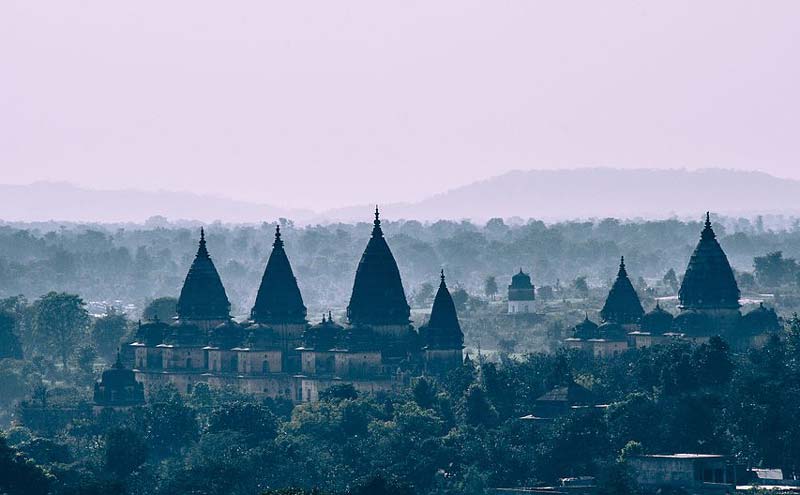
The town of Orchha lies on the Betwa River. It was founded by Bundela king Rudra Pratap Singh in the 16th century.
Orchha has a number of palaces, forts and temples which seem frozen in time.The Raja Mahal, part of a huge palace-fort, is located on an island in Betwa River. The whole complex is surrounded by a battlement wall. The palace has religiously themed brilliant and evocative murals. The Jahangir Mahal, built by Bir Singh Deo in the 17th century, is known for its delicate art work. The third palace in the complex, The Rai Parveen Palace, is bang in the midst of well-laid gardens.
The Raja Ram Temple, a former palace, was built by the then king Madhukar Shah. The Chaturbhuj Temple, built on a vast stone platform, was commissioned by Ganesh Kunwar, the queen of Orchha. Standing at 344 feet, its Vimana is one of the tallest in India. While it has stark interiors, its outside walls are decorated with religious imagery. The vibrantly coloured frescoes within the Laxminarayan temple possess secular and social themes. The temple itself has elements of both fort and temple architecture.
The Phool Bagh garden, with its pavilions and fountains, is the resting place of the Bundela royals. The Oont Khana (Camel Shelter) lies next to the fort. It is the place where the King’s camels were tethered. Climb on its roof to get a panoramic view of the town.
Numerous chhatris or cenotaphs lie in the vicinity of the fort, located close to Kanchan Ghat on the river
16. Madikeri, Karnataka
Located at a height of around 1500 metres in the Western Ghats is the lovely hill station of Madikeri, the headquarters of Kodagu in Karnataka.The colorful scenery of the place is framed by misty green hills, dense tropical forests, cascading and noisy waterfalls and plantations of coffee, tea and spices, all of which contribute to the enchanting beauty of the place, so much so that it is called the ‘Scotland of India’. Kodagu district is drained by the River Kaveri and its tributaries.
Madikeri is surrounded by fascinating natural beauty. One such spot is Abbey Falls, aserene and beautiful waterfall, located a km away from the town amidst the green spice estates and coffee plantations. If you wish for cam and peace, far away from the madding crowd, head to Chiklihole Reservoir whose waters flow through the lush green region. The surrounding forests have a rich variety of the local flora and fauna. This place with amazing beauty is ideal for nature photography. The Harangi Dam, on the River Kaveri, offers the perfect place to enjoy the surrounding beauty in the company of one’s family. The Honnamana Kere Lake, the largest lake in the region, is named after Goddess Honnamma and has a temple dedicated to her.
For the outdoors-lovers, a trek to Kotebetta Peak offers just the opportunity. Trekking within huge estates and lush greenery all around makes for an exhilarating experience. Once you reach the peak, the lovely panorama of the region makes the efforts all the worthwhile.
The Namdroling Monastery in Bylakuppe, located a slight distance away, is the spiritual centre of this Tibetan settlement.Golden Temple, as it is locally known, is very beautiful but one must also explore the smaller monasteries.
17. Pattadakal Monuments, Karnataka

7th century Ardhanarishvara (left half Shiva, right half Parvati) at Kadasiddheswara Shaivism temple, Pattadakal monuments Karnataka (Photo: Ms Sarah Welch, CC BY-SA 4.0)
Pattadakal, another UNESCO World Heritage Site in India, is located around 165 km from Belgaum in Karnataka. Set in the Malprabha River Valley amidst sandstone hills, it houses a complex of Hindu and Jain temples that display a blend of North and South Indian architectural styles that is both harmonious and unique. It was built in the 7th and 8th centuries by the Badami Chalukyakings. The place was used for coronation ceremonies hence its name.
The Hindu temples in the complex are dedicated to Lord Shiva but also have features of Vaishnavism and Shakti cult. On their walls, the beautiful carvings tell the stories from holy Hindu texts such as the Mahabharata, the Ramayana, and the Bhagvat Purana etc.
What makes the group truly unique is that while some of the temples are in Dravidian style, others display a distinctNagara style. The most sophisticated temples, with this fusion of styles are the Virupaksha and Papanathatemples.
18. Auroville, Puducherry
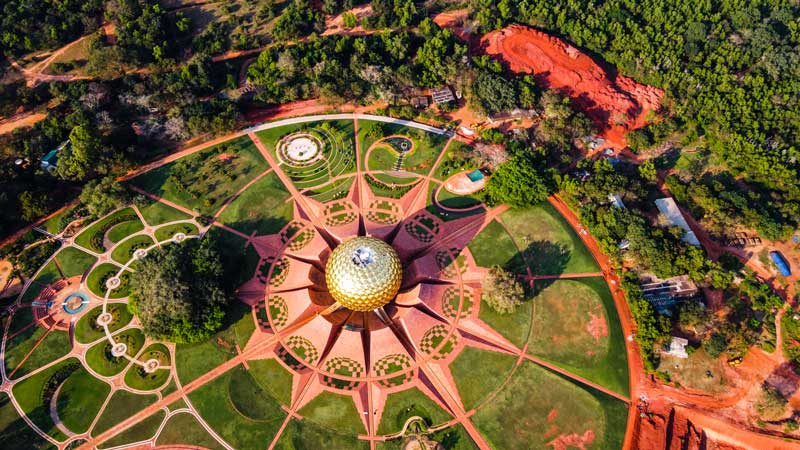
Auroville, with its boundaries falling in both Tamil Nadu and Puducherry, is an experimental township and like no other place in India. It aims to realize the ideal of human unity and is based on the vision and philosophy of Sri Aurobindo.
In the centre of the township is a golden metallic sphere called Matrimandir, where peace is maintained inside and the manicured gardens are called the Peace Area. But the visitors are not allowed too close to the dome as it is meant for meditation purposes.
Auroville has a number of shops, restaurants and cafes and they are thronged throughout the day by visitors.
19. Longwa, Nagaland
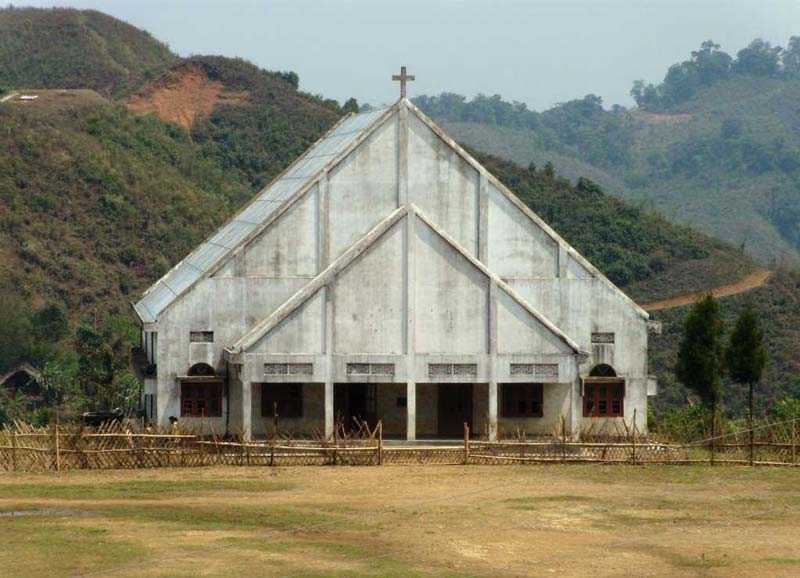
42 km from Mon Township in Nagaland lies the Konyak village of Longwa that straddles the international border between India and Myanmar that actually passes through the house of Angh, the village chief.The Konyaks were headhunters who gave up the practice when they discovered Christianity in the 1960s. The members have tattooed face and body parts signifying their tribe, clan, and status in society.
Surrounded by dense forests and spectacular hills, Longwa village is beautiful, to say the least. This is truly offbeat tourism and meeting people with such heritage and culture will make it worth your while.
20. Mawlyngot, Meghalaya
To experience raw Nature, head to the idyllic hamlet of Mawlyngot in Meghalaya. Located in East Khasi Hills, the place is known for its tea and beautiful trekking trails. Surrounded by green hills with tea estates, small and beautiful houses with welcoming and cheerful people, the place is nature at its best.
The place is famous for Urlong tea. The trekking trips to the nearby hills and the Umsong River will satisfy the souls of nature lovers. The Smit village and the Laitlum Canyons are brilliant must visit places.

